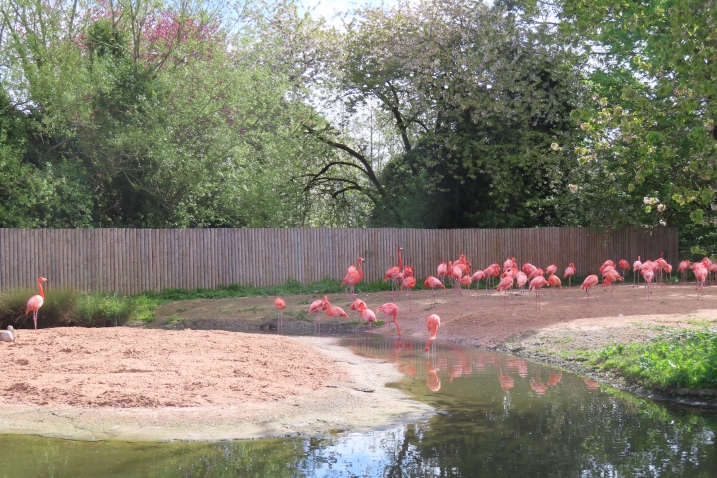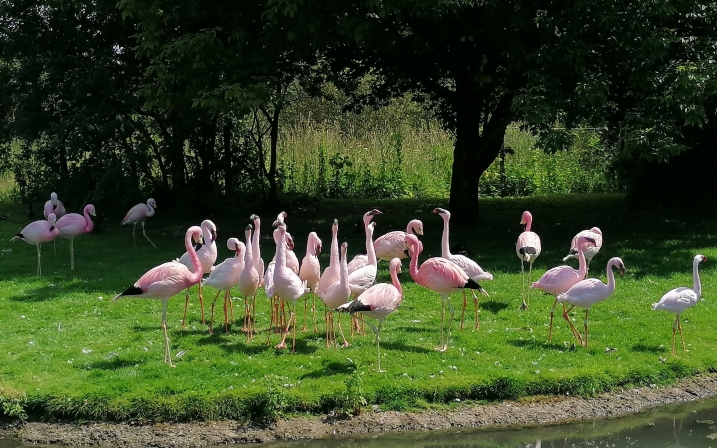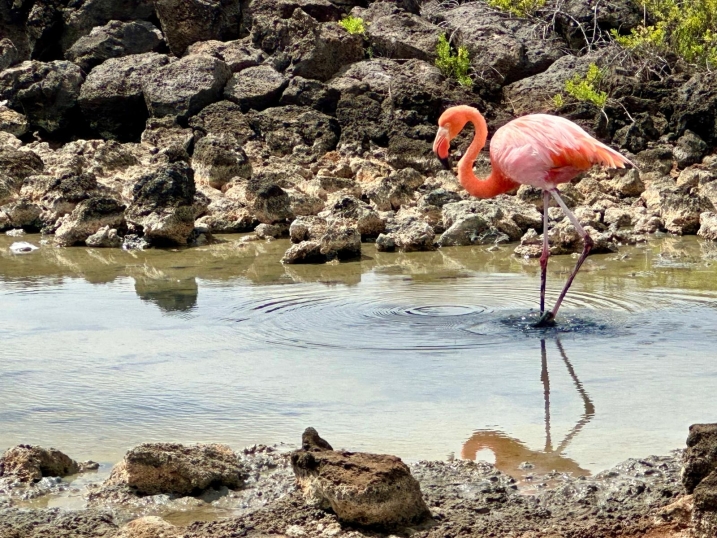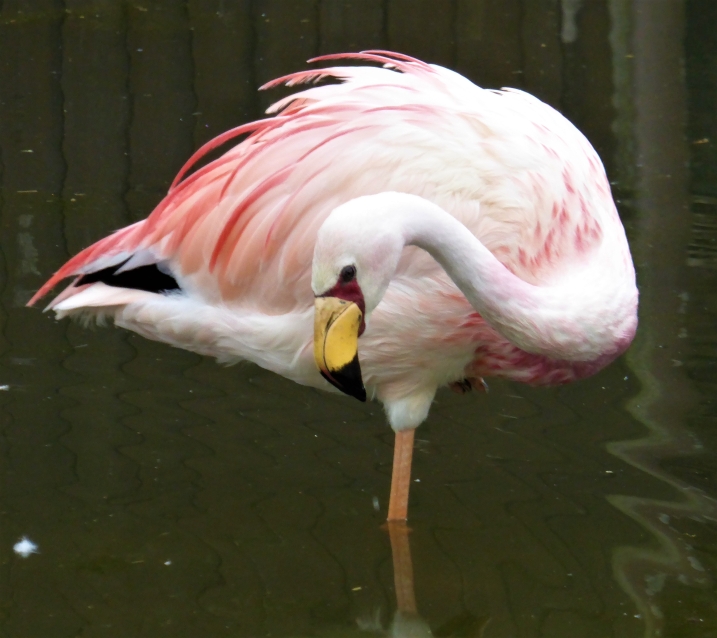Pond dipping for flamingos?
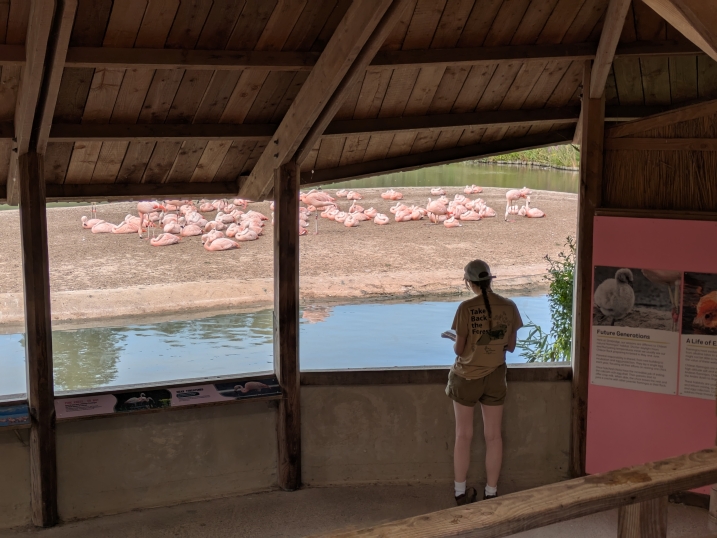
Welcome to the summer edition of the WWT Flamingo Diary. In this blog post, we will look into the world of current flamingo research that has been going on involving the Chilean flamingo flock this spring and summer. Flamingos are filter feeders, and have evolved highly adapted bills for sieving out small crustaceans, aquatic invertebrates and algae from the water column. In zoos and other animal collections, flamingos get fed a complete pelleted diet that provides them with all of the nutrients they require, as well as the pigments that turn them their distinctive pink colour. However, the birds still have a strong urge to filter feed from the water in their pools, even though they are provided with the correct diet by the team of animal care staff. Sometimes many birds would be seen in their pool filtering away, whilst at other times, nobody will be out and about having a paddle.
There, this research wanted to find out whether there was any link between the time flamingos spend in their pools and the characteristics of the water (how much algae is present, are there aquatic organisms visible?).

Flamingos have evolved a highly specialised mechanism of pump (their tongue) and sieve (the filtering material within their bills) to gather tiny particles of food from the water. They can dredge along the bottom, hoping to find something tasty to hoover up, leaving a trail of bubbles as they go...

...Or they can filter delicately from the very surface or top few centimetres of the water. Either way, the flamingo's desire to filter within their pools is strong and we were interested in what caused this behaviour to be more common on certain days.
To collect data on the foraging behaviour of the birds, MSc Animal Behaviour student Florence from the Centre for Research in Animal Behaviour at the University of Exeter has spent the months of May, June and July watching individual birds in the Chilean flamingo flock at WWT Slimbridge to see how long they spend foraging, and how many birds forage together. Following individuals is easy, because of the leg rings that each bird wears - so Florence can work out who is who and see if individuals might have preferences for when they spend time filter feeding.
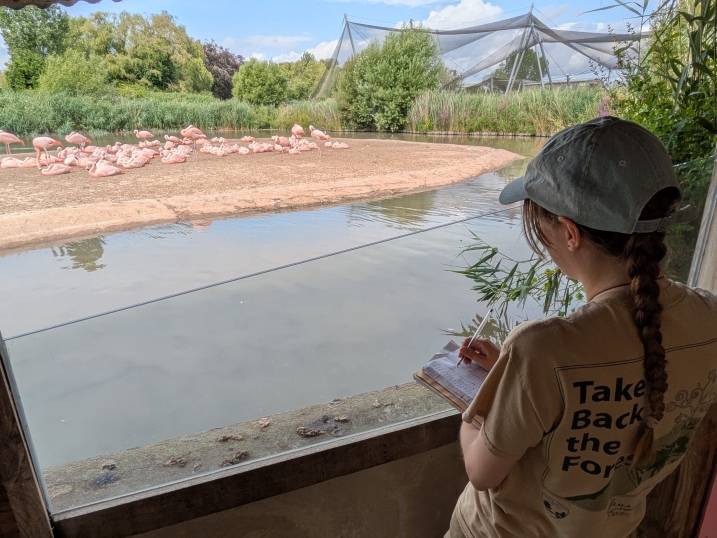
Why are the birds on land? Why are the birds in the water? Florence follows individual flamingos in the WWT Slimbridge Chilean flamingo to see what influences their choice of activity and, specifically, how long they spend foraging in their pool.
Alongside of the bird watching, Florence has also been pond dipping (all in the name of science). Heading to the side of the flamingos' enclosure, and away from their favourite resting island so the flock is not disturbed, Florence collects a sample of pond water and then checks to see whether any aquatic invertebrates (such as Daphnia - commonly known as water fleas, or blood worms - that look like small, swimming red threads) present in the water. Florence then uses a colour chart to see how many suspended solids are present in the sample (how cloudy does the water look?) and how much algae, if any, is present. Florence uses a colour chart with clear to various shades of green to estimate the algal population in the sample.
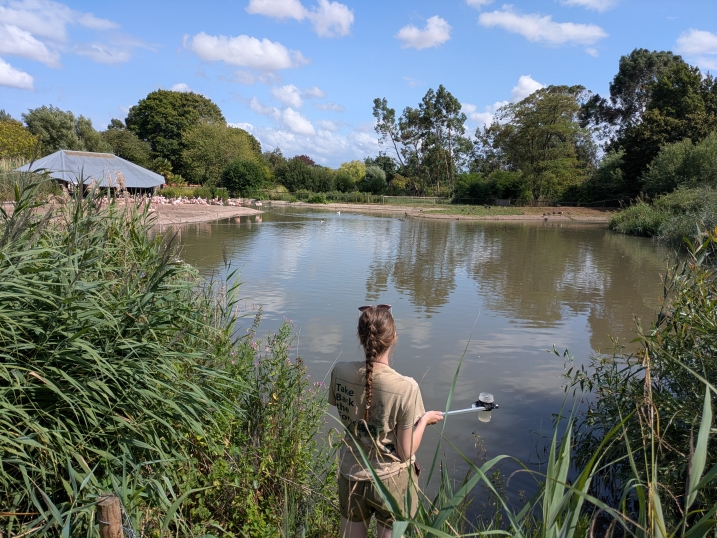
MSc student Florence heads to a quiet corner of the Chilean flamingo enclosure at WWT Slimbridge to collect a sample of water from the birds' pool to measure what it looks like and what may be living in it.
The video below gives Florence's view of the Chilean flamingos whilst she is collecting the water sample. Moving to this area of the enclosure, that is not publicly accessible means that her data collection does not disturb the flamingos. The birds are used to seeing WWT staff members in these off-show areas, so Florence blends in.
Florence checks the water sample and then pours it back. She cleans and stores her water sampling equipment and continues with her behavioural observations from the main viewing hide. Florence has been taking two water samples per day and is then hoping to correlate any specific characteristics from the water sample with the behaviours she sees the birds performing. By collecting data over many days, weeks, and months, we can be more certain in any conclusions drawn between the characteristics of the water and the behaviours displayed by the flamingos.
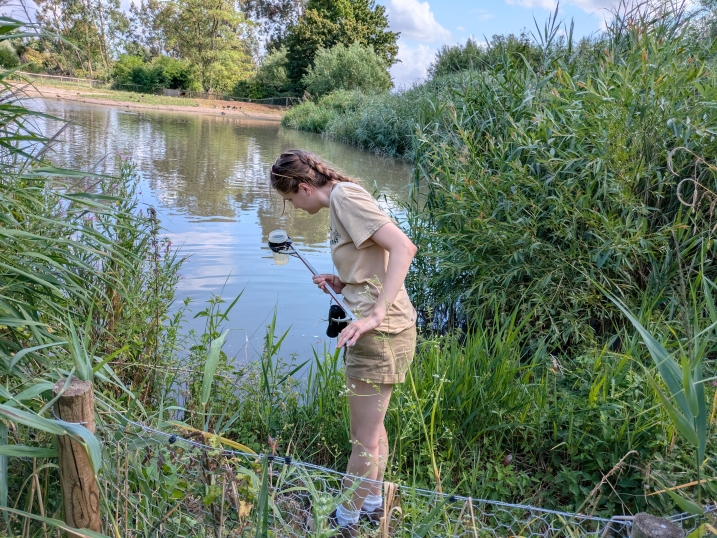
What does today's sample have in store? Flamingos benefit from aquatic bugs and floating algae - the presence of these animals and plants in their pools gives opportunities for performing natural behaviours.
We predicted to find that more birds spend time filter feeding when the water is cloudier, when there are more algal blooms and where more invertebrates are present in the same. This would tell us that the flamingos are using natural cues about the characteristics of their environment to choose what behaviours to perform and when. And if this is the case, we could design environmental enrichment (such as the use of bubblers to stir up the water) to encourage further beneficial activities and opportunities to filter feed. Flamingos have evolved to filter feed, so we need to ensure they can still do this when housed under human care because it an important feature of their ecology. You can see the video below of a greater flamingo at WWT Martin Mere for a close-up of this behaviour and how it is performed.
Not a Chilean flamingo, but here's an example of a filtering flamingo in action. You can see the tongue pumping water through the filtering water, and the bird them collects as tasty morsels to swallow.
This project adds to the growing body of research that we have on the lives of the flamingos at WWT Slimbridge and other WWT centres. The more we understand the behaviour of the animals in our care, the better we can identify what they need from their enclosure to keep them happy and healthy. So it's a big "good work" to Florence for all of her hard work in data collecting (flamingo behaviour and pond dipping) this summer that continues to add to our knowledge of the birds and their needs. It's great to keep this link with the MSc Animal Behaviour at the University of Exeter to help us provide evidence for the animal management in WWT's collections.

Who's in the water and why? Hopefully this combination of bird watching and pond dipping will answer these questions!
